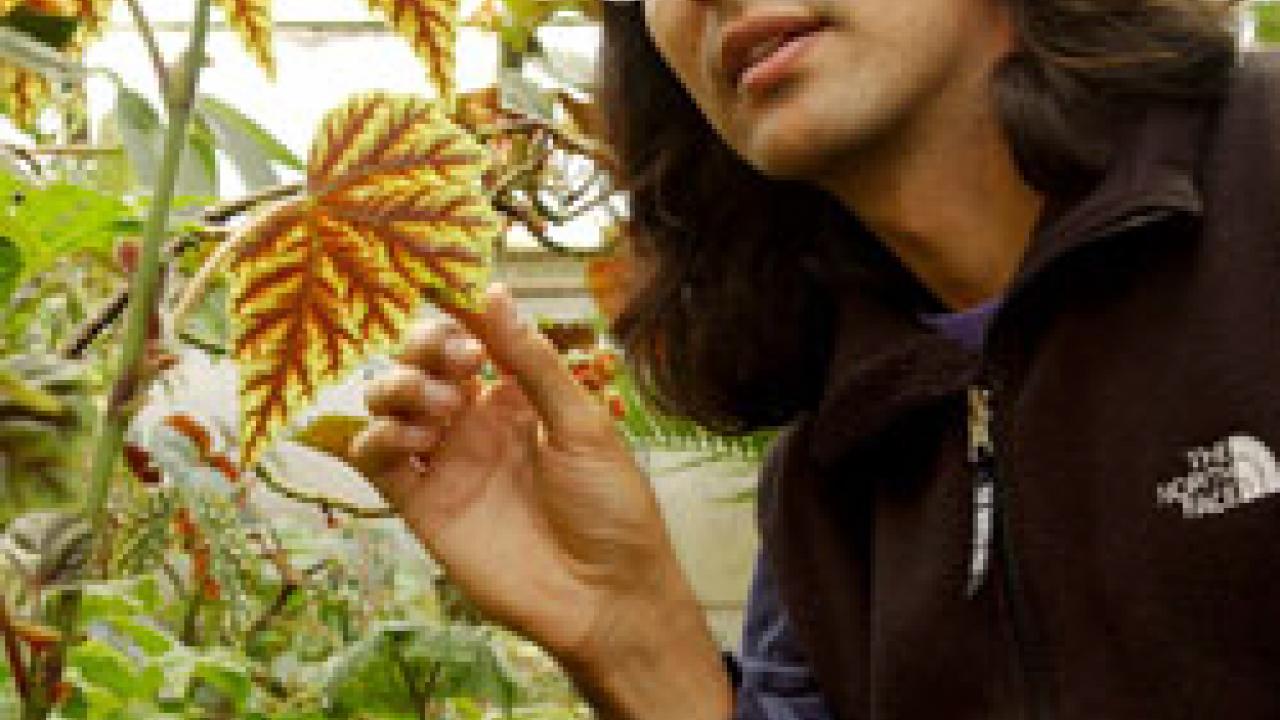Ernesto Sandoval is a plant person. No, he doesn't sprout buds or need occasional watering. (But he does kind of like the bone-warming heat of a greenhouse). For Sandoval, the curator at the UC Davis Botanical Conservatory, raising and rearing flora and foliage is a deeply meaningful way of life. Simply, his passion is his profession.
"Plant people are nice people," says Sandoval. "There's something about working in a garden and nurturing plants and flowers that makes one more peaceful and calm."
The greening of Sandoval's life started early on. He grew up in the Los Angeles area and from the age of 10 worked for his dad's landscaping business -- aptly-described as the "Mo', Blow and Go" style. From cutting countless lawns to cultivating saplings and shrubs in the yards of the San Fernando Valley, Sandoval earned both a pair of green-stained shoes and a practical botanical education.
More formally, Sandoval obtained his bachelor's degree in botany from UC Davis in 1996.
"When I came here as a student I learned the 'why' behind plants and botany," said Sandoval, who has worked full time at the conservatory since his graduation.
Last summer, the national media spotlight shined on Sandoval when a 5-foot flower -- stinking strongly of putrefying roadkill and colored deep burgundy to mimic rotting flesh -- stirred up a buzz. In June, "Ted the Titan," a specimen of Amorphophallus titanum, also known as titan arum or the corpse flower, burst into full bloom in the greenhouse at the conservatory. It was one of Sandoval's projects. For several days, he hosted public tours and explained the science behind the rare blooming to thousands of visitors -- from campus employees to writers from National Geographic.
On any given winter or spring break, Sandoval will pack a suitcase and take students from the undergraduate Botany Club to places like Arizona and Baja California. Their goal -- search out rare and exotic plants and flowers.
"We try to have some fun with plants," he said. "It's good to look a plants in a different setting or scenery."
On March 20, he will spend the day teaching members of the public how to light and compose photos of plants. The photography workshop is being sponsored by the Davis Botanical Society. A plant photography enthusiast for more than 10 years, Sandoval will take participants on a tour of the campus's botanical collections.
Leading tours of plant life is one of Sandoval's many duties at the conservatory, located north of Storer Hall. Built in 1959, the conservatory serves the university and public communities as an educational facility, research resource and genetic diversity preserve. It houses more than 3,000 plant species in more than 150 families, including examples from most of the world's climatic regions.
What's the biggest issue in the field of botany today?
People are still trying to figure out the evolution behind the origin of flowers. In other words, how did flowering plants evolve and what were their ancestors? At the conservatory, we provide plant materials and specimens to scientists who are trying to solve some of the issues behind this question with DNA analyses.
What do you like most about your job?
I like the combination of working with people and plants. It's especially gratifying to collaborate with all types of people from undergraduate students to our retired volunteers.
And the least?
The lack of conservatory greenhouse space on campus. And while our facilities here function fairly well, some of the controls are antiquated and limited. People will ask, "Well, how do you control the humidity?' And the answer is, "We water the plants, and it gets humid."
What's something surprising about you that people don't know?
I'm outgoing and gregarious, but I really do enjoy quiet times, which I do not get enough of.
See any good movies lately?
I loved all "The Lord of the Ring" movies. I especially enjoyed seeing the vegetation in all those films. It was darn impressive, and it's tempting to consider going to New Zealand, where they filmed the movies, to see the plants and trees and flowers. I particularly fell in love with the forest surrounding Rivendell -- where the elves lived, though much of this is computer-animated.
What are some of your most treasured possessions?
My slide collection of plants. I have more than 4,000 slides, and a nice collection of desert plant slides.
What's your guilty pleasure?
Browsing through photographic equipment on the Web. I'm an amateur photographer, and most of my cameras are from the 1970s. I like some of the newer equipment from Canon.
If you had three wishes, what would they be?
One … that somebody would donate a very large sum of money to the Botanical Conservatory. Two … that more people would take up gardening. Like I said, gardening makes people more peaceful and calm. Three … that people would eat less meat. I'm not a vegetarian. I eat chicken every couple days or so. But meat consumption accounts for a lot of problems in society, from health issues to pollution and habitat loss, to name a few. •
Prospective registrants for Sandoval's March 20 botanical photography workshop can find more details at http://www.herbarium.ucdavis.edu or by contacting Sandoval at (530) 752-0569 or planthead667@mac.com.
